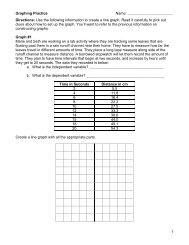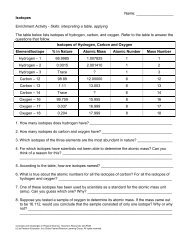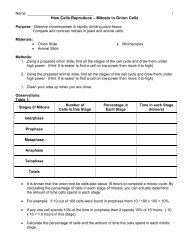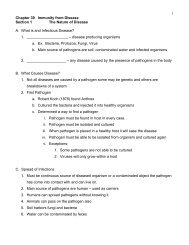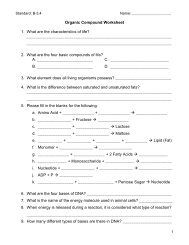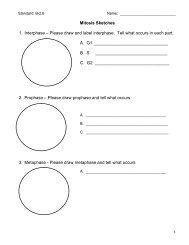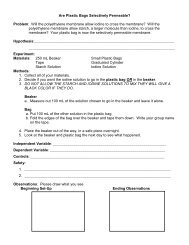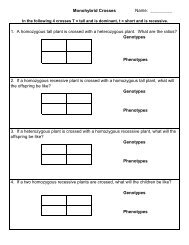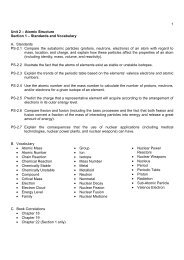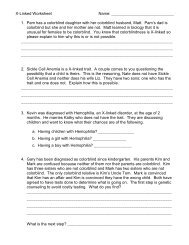PS-6.8 - Electricity Worksheet - For Review
PS-6.8 - Electricity Worksheet - For Review
PS-6.8 - Electricity Worksheet - For Review
You also want an ePaper? Increase the reach of your titles
YUMPU automatically turns print PDFs into web optimized ePapers that Google loves.
1. _________________________ is the flow of electric charges.<br />
2. An _______________ _________________ carries energy.<br />
3. List at least four things that can be found in an electric circuit. ________________,<br />
___________________, ___________________, and ______________________.<br />
4. Why do people use electrical symbols and circuit diagrams to describe a circuit?<br />
5. Label each of the following parts of the electric circuit:<br />
______________<br />
____________<br />
______________<br />
______________<br />
_________________<br />
_______________<br />
6. Circuits provide a _____________ through which electricity travels.<br />
7. A ___________________ is an electrical component that uses energy.<br />
8. Because a complete path through wire is needed for electricity to work, a _________ works<br />
by breaking or completing the circuit path.<br />
9. What is the difference between an open circuit and a closed circuit?<br />
10. Draw a closed circuit diagram.<br />
11. Draw a circuit that has a battery, three wires, a bulb, and a switch.<br />
12. The electrical property of matter that creates a force between objects is called<br />
______________________.<br />
13. What are the two kinds of charges? _______________ and _________________
14. Think back to chemistry, what are the parts of the atoms that have the charge? Name the<br />
part and the charge. Where do you find each?<br />
15. Complete the phrases. “Like charge ______________” and “Unlike charges<br />
______________”.<br />
16. The buildup of charges on an object is called _______________________________.<br />
17. <strong>For</strong> each of the following, write whether they will attract, repel, or nothing will happen.<br />
A. B. C. 0<br />
A and B _______________<br />
B and C _______________<br />
A and A ______________<br />
B and A _______________<br />
C and C ______________<br />
B and B _______________<br />
18. An object with zero charge is called ________________________________.<br />
The person whose finger is shown below has walked across a carpet and is about to touch the<br />
doorknob.<br />
19. Are the charges in the finger attracted or repelled by the charges in the doorknob? How<br />
can you tell?<br />
20. What do the lines around the finger and doorknob represent?<br />
21. Static electric charge is a result of electrons moving into an object from another object.<br />
What is another way static electricity can build up in an object?<br />
22. What will the charge be on the finger and on the doorknob after they touch?<br />
23. What is the unit of electric charge? _____________________<br />
24. The electric force is the force of attraction or repulsion between objects due to charge. It<br />
depends on the _________________ and the __________________. The electric force<br />
acts through a field.
From the list below, choose the term that best completes each sentence.<br />
conservation of charge static electricity conduction induction<br />
static discharge electroscope friction<br />
25. The buildup of charges on an object is called ____________________ .<br />
26. The law of ________________________ states that charges are not created or destroyed.<br />
They are transferred.<br />
27. The transfer of charge from one object to another by rubbing is called<br />
____________________.<br />
28. A(n) ____________________ is an instrument that can detect an electric charge.<br />
29. The loss of static electricity as electric charges move off an object is called<br />
___________________.<br />
30. The movement of electrons from one part of an object to another part, caused by the<br />
electric field of another object, without the two objects touching is called<br />
_____________________.<br />
31. The transfer of charge when electrons move from a charged object to another object by<br />
direct contact is called ______________________.



